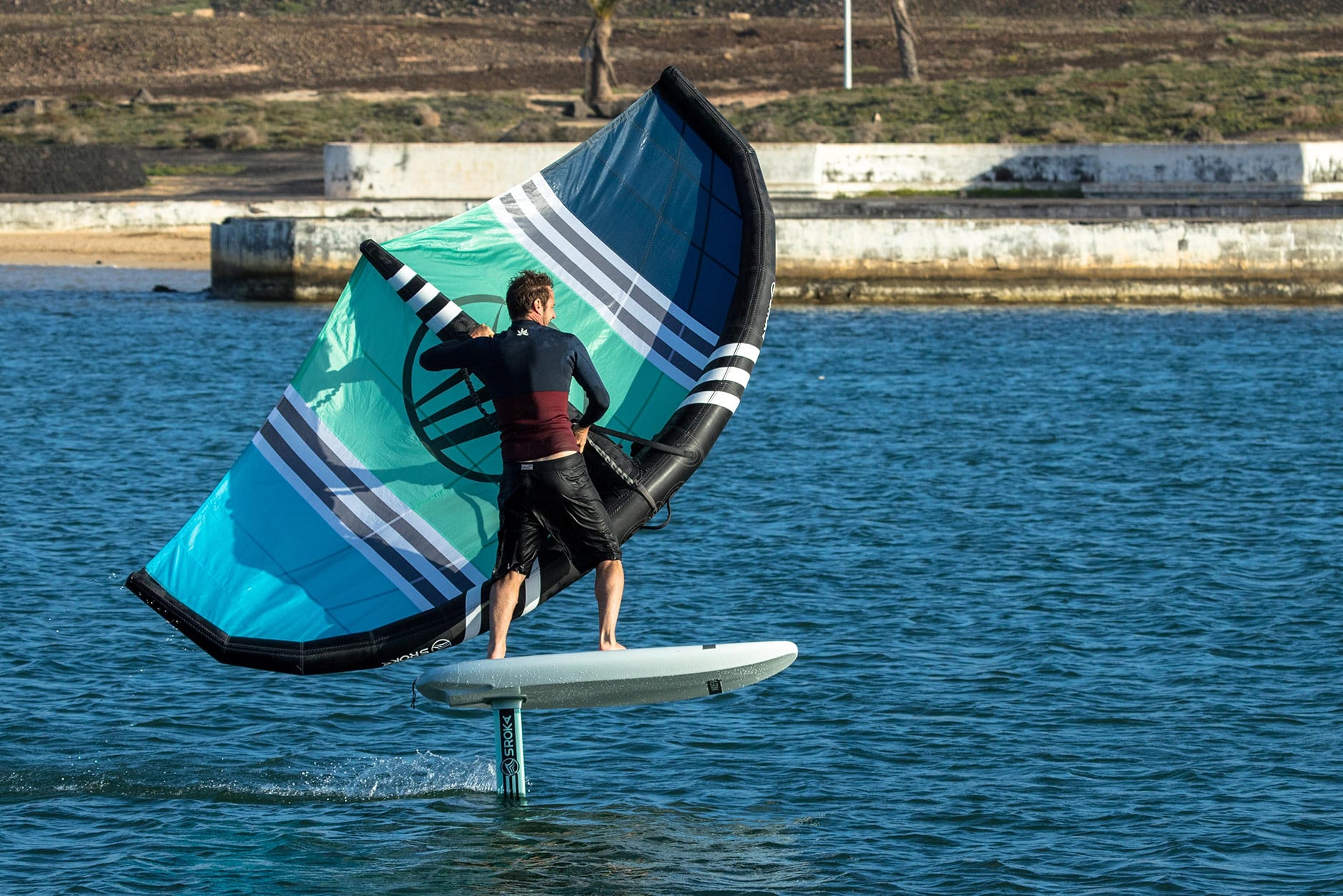Andalusia, a sunny region in the south of Spain, is a true paradise for water sports enthusiasts, especially wing foil. With its vast and diverse …
How is a carbon foil made?
Building a carbon foil is no easy feat. There are different ways and techniques to make a carbon foil. However, building a carbon foil requires technicality and know-how. In this article we detail the different steps to explain how to make a foil.
It is necessary to differentiate the construction of the mast assembly and the fuselage, which are technically simpler to produce. An excellent carbon foil is determined by its rigidity, its glide and therefore, the quality of the profiles used, the thickness (rope and general thickness), and the quality of the materials used.
From the outside, it is very difficult to compare a high-performance (rigid) mast with a soft one. A mast looks like a mast. However, performance on the water can be totally different. Some carbon masts are less steep than some aluminum masts. And yet everyone thinks that the carbon mast is more efficient.
Let’s get into the details of how to make a carbon foil in order to better understand and choose your carbon foil.
What are the different steps to make a Carbon foil?
1. Design
The design of carbon foils is a crucial step in the manufacturing process of a carbon foil.
- To work efficiently, the foil project manager gives the most precise specifications possible and determines the specific characteristics of what he is looking for to create this carbon foil.
- Then engineers use advanced 3D software to design the foils accurately. This software determines the precise characteristics of each profile and makes it possible to choose the best profile in line with the specifications.
- Finally, in a third step, he models the different parts of the foil: the wings, the fuselage, the mast and the plate and above all optimizes their shape and their interlocking by refining certain parts, or by thickening certain potentially fragile areas.
Using these simulation tools, engineers simulate the behavior of the foil in different conditions and observe the potential drag of each part of the foil, determine the potential speed of each fin or stabilizer.
This step is fundamental to save time in prototyping later. This makes it possible to make informed decisions when designing the foil to achieve the best possible performance.
The characteristics of a carbon mast for speed or for jumping are not the same. The stress constraints are different. As a result, the mast shapes are adjusted as required.
As a general rule, if you are looking for glide, you reduce the drag of the mast, fuselage and fins. Thus, to reduce drag, we reduce the thickness, the chord of the mast, and we refine the thickness of the fuselage while being as stiff as possible. The complexity of a good carbon foil is between excellent finesse and maximum rigidity.
2. Prototyping/machining of the mold
When the engineer and project manager have found a compromise on the overall shape and performance of the foil, the design phase begins with the production of a prototype.
This step consists of machining the mold of the different parts of the foil. If the design is done well, then the prototype is only a confirmation phase. Otherwise, the 3D modeling must be restarted.
The machining is carried out with high precision using a CNC, it is a machine that cuts aluminum or steel (it is also possible to make wooden molds or in a “lab” in some cases for rapid propagation).
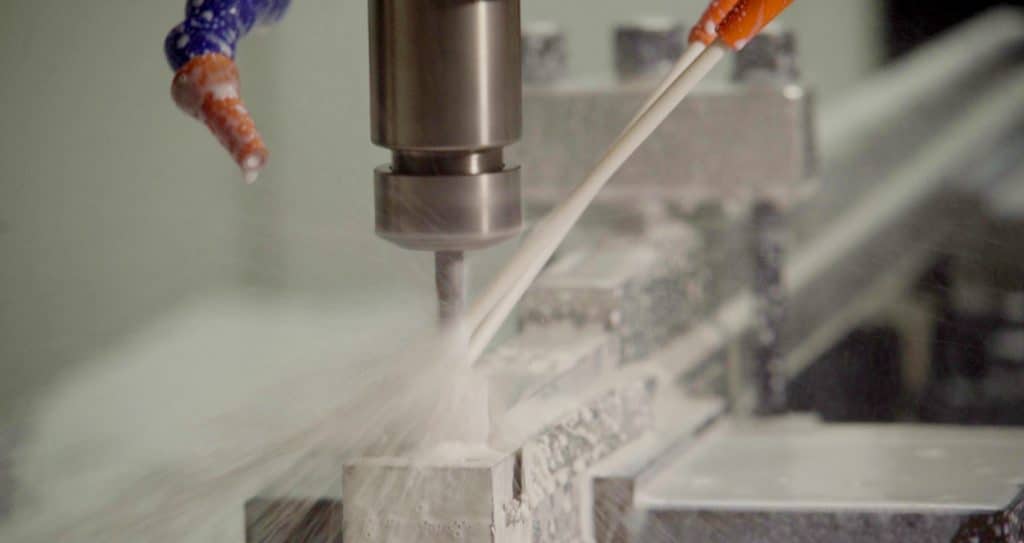
3.Positioning the carbon fabrics in the mold.
When the mold is finished and polished, another machine cuts the carbon fabric with a laser. More and more, prepreg carbon (prepreg at the time of production) is being used. This method has several advantages: it achieves the ideal amount of resin on the carbon, saves personnel from working with toxic resin, and saves time and is very accurate.
After this step, the pieces of fabric are placed in the moulds, orienting them in specific ways in order to obtain more strength in some places or more rigidity in others. Once the mould is closed, it is heated and compressed with a hydraulic press.
The pieces of carbon fabric are oriented in the moulds in specific ways to obtain more strength in one place or more rigidity in another. The positioning angle of the carbon fabrics, the quantity or the thickness influence the mechanical strength of the part. This is one of the key steps in the realization of the carbon foil. If the factory has little or no of these fundamental techniques, then the part will never have the desired characteristics.
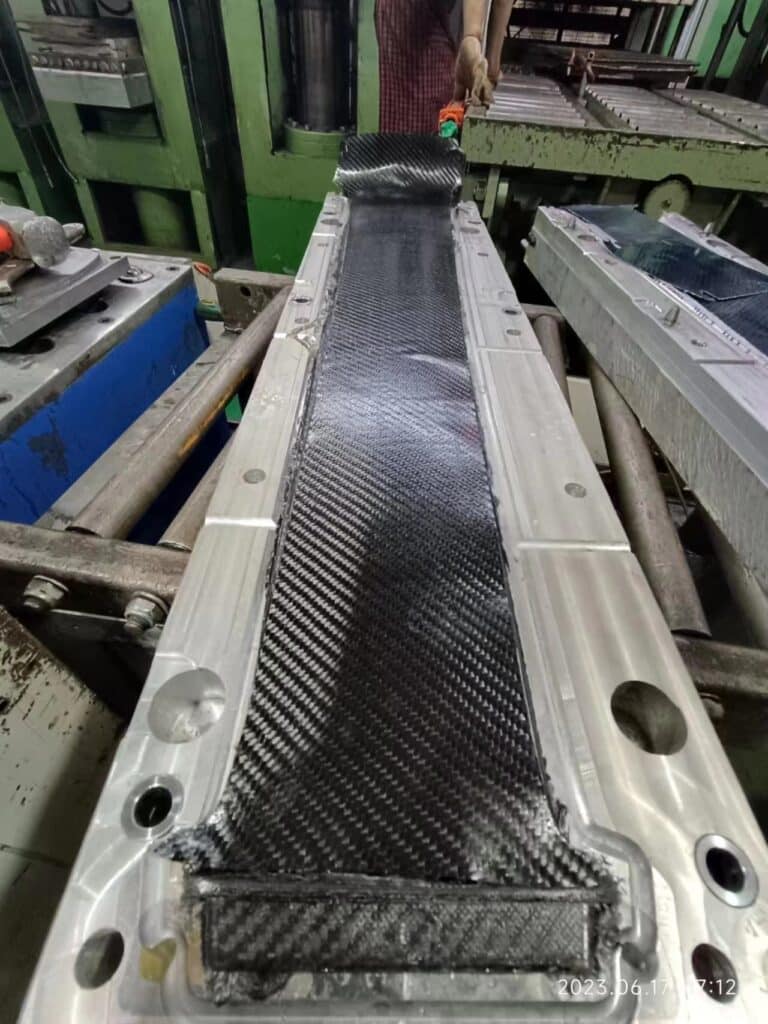
4. Cooking
Once the mould is closed, it is heated and compressed with a hydraulic press (several tons). Sometimes, on some parts, an autoclave is used to increase the pressure on the entire part even more. However, this requires a lot of manpower, time, and infrastructure. More and more large presses are being used that allow several tons to be placed on all the different parts of the mold.
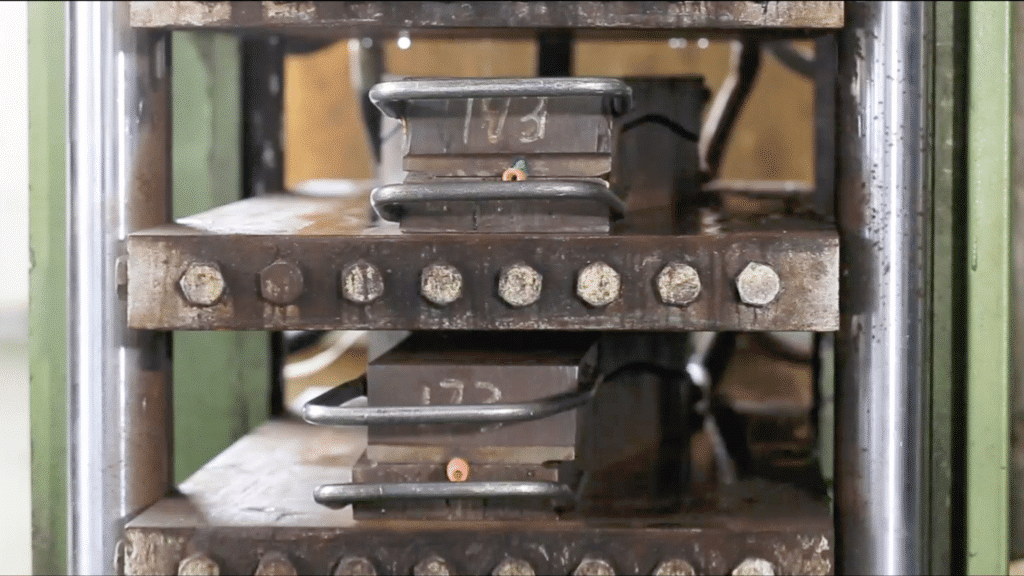
5. Finishing
Once the cooking is complete, remove the excess material. Each piece is sanded by hand or with a robot to obtain a smooth surface.
Finally, holes are drilled to put the inserts or allow the screws to pass through. A varnish is applied to it. The part is then tested in all directions to ensure that it has no defects.
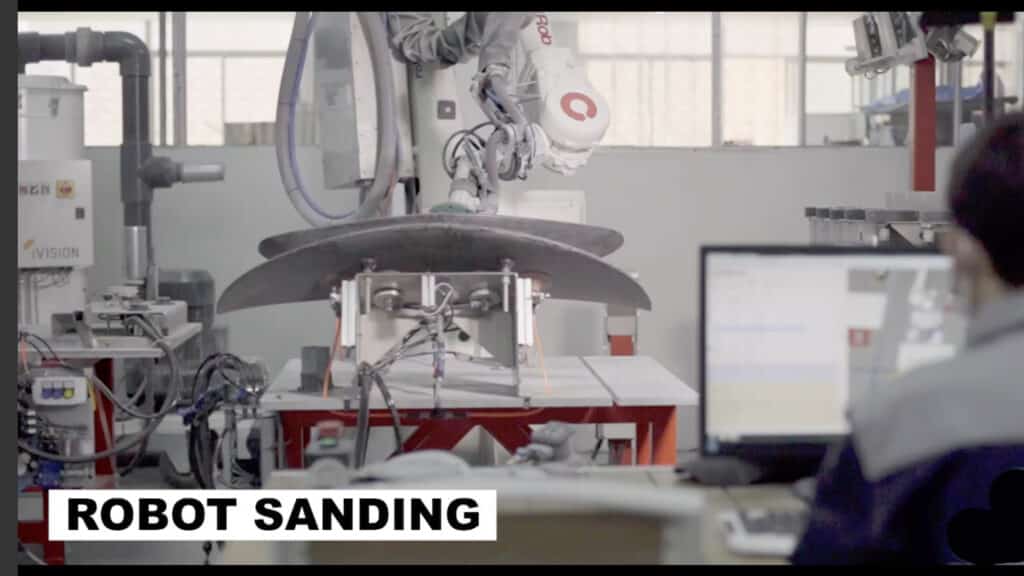
6. The testing phase
If everything meets the specifications, the desired performance on the water (thanks to the tests in different wind, swell and gauge conditions) and if it resists the mechanical forces in the workshop, then it is possible to launch the industrialization phase where each step is optimized to produce a foil in large series.
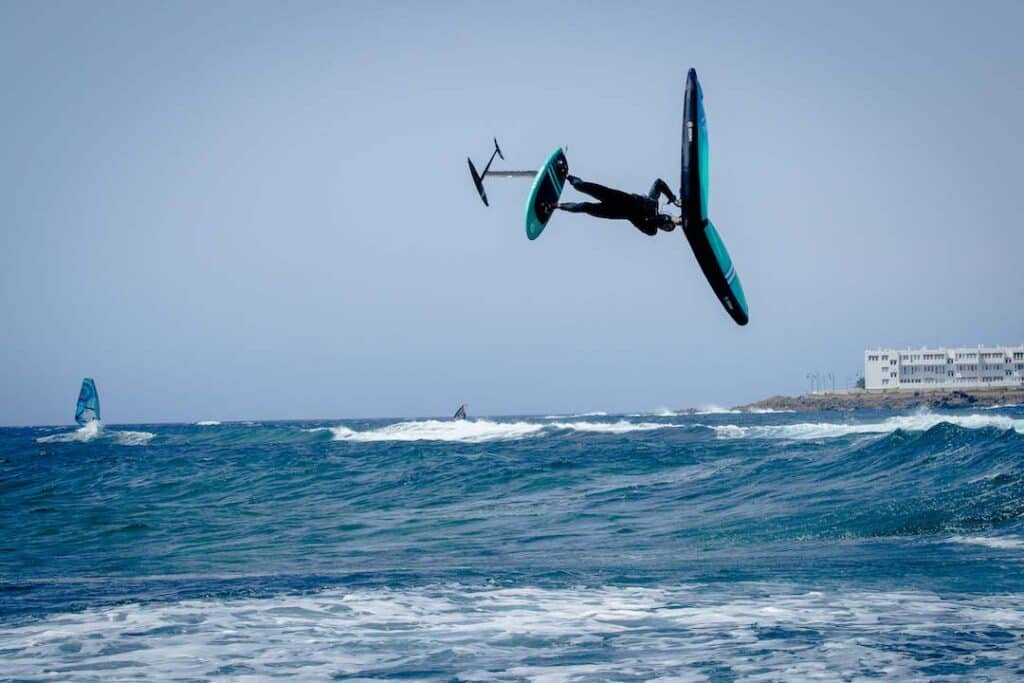
In conclusion.
Producing a carbon foil requires a lot of research and time to come up with a high-performance and durable product. Some brands want to speed up these different steps to produce quickly and create a buzz in marketing.
Our strategy is quite the opposite. We prefer to take the time that each step is perfectly carried out to produce a high-performance and durable foil over time. It requires a lot of patience, time, and energy. But it makes it possible to make a carbon foil that is exceptionally efficient and solid at the same time.
If you still have questions about this, or for any other request, please do not hesitate to contact us !
Article you may be interested in
The 360 wing foil is a maneuver that allows you to start freestyle flat on the water. This trick, which involves making a complete turn …
Mauritius, known for its white sandy beaches and crystal clear waters, is a dream destination for water sports enthusiasts. Among the popular activities that attract …
Wingfoiling is an emerging water sport that is gaining popularity due to its high accessibility. Whether you are young or old, wingfoiling is an activity …


